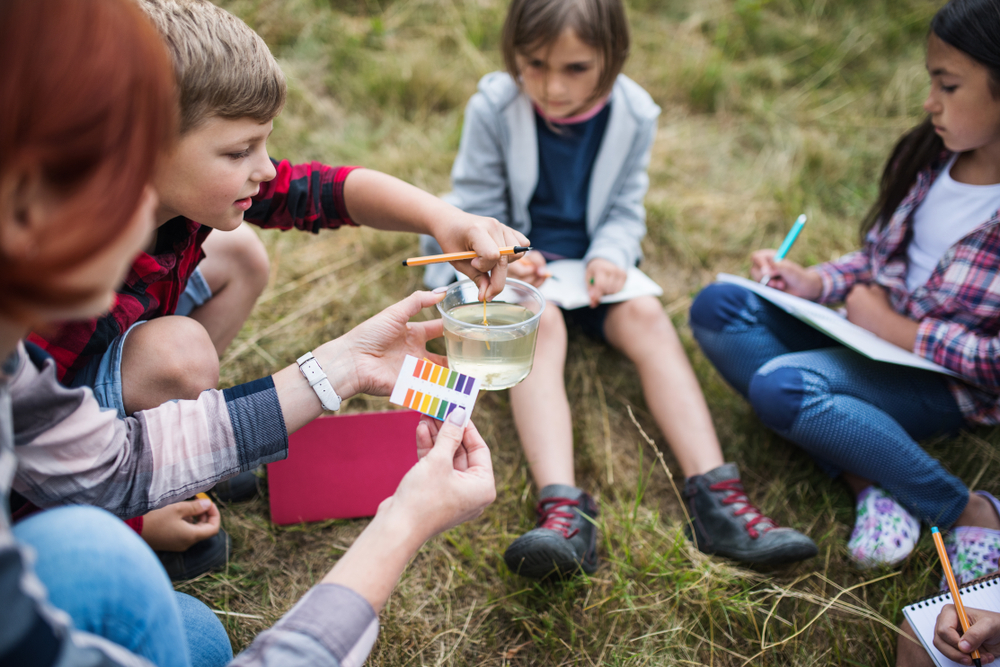5 Ways to Learn Outside
- July 14, 2021
- By Katie Kennedy
It doesn’t take much digging to find the benefits of spending more time outside, especially for kids. A 2019 study from the Aarhus University in Denmark suggests that spending more time outdoors increases the chances for positive mental health in adolescence and adulthood. As far as academics, fresh air can have a benefit on that as well. Scientists from Canada’s University of Lethbridge notes that students who have an adequate amount of play outside tend to perform better academically. Since so much of a student’s day is indoors by design, it’s crucial to allow them to be “one with nature.” While this should be practiced year-round, here are five ideas to learn outside this summer that students will just love!

Take a Field Trip
Chances are, there are so many potential “field trip” ideas right in your town. When I say field trips, I’m thinking of any opportunity to learn something new in a brand new setting. Instant hits with kids are always the zoo, aquarium, or children’s museums, but don’t forget to visit lesser-known options. Many museums have youth-focused programs to get their minds learning and exploring. Even a visit to a local city park is such a rewarding experience. Whatever destination you choose, be sure to ask your learners questions to help them think critically about what they see. When you get home, keep the conversation going in a way that fits their learning style. Let them draw or paint a picture, give a presentation, or write in their journal. If you’re not sure what’s near you, the National Park Service has this incredibly helpful Park Finder.
Become a Local Guide
Have your learners ever been curious about the critters that are local to where you live? Go and investigate the questions they may have about what’s around you. Depending on where you live, that’s as simple as going to a nearby park or looking around your neighborhood. If you live in a large city, where animals may be a bit more scarce, consider going to a nearby zoo or nature center. From what they learn, students can create a field guide about the different animals “in the wild.”
Suppose you find your students have more interest in history than zoology. In that case, you can apply the same kind of activity to learn about the history of where you live at local historical centers. Answering questions like how and when your town or city was founded can unlock a whole new level of curiosity and discovery. Instead of a field guide, they can create a timeline of important events throughout local history and folklore.
Start a Backyard Garden
Sometimes, you don’t have to look much farther than your backyard for an opportunity to get outside. The warmer weather is a great chance to begin either a vegetable or flower garden in your home. If space is limited, consider even one potted plant that your learners can make their own and take care of year-round. Making a small garden their responsibility will help garner independence and maybe even a green thumb. Students will get first-hand experience at the life cycle of a plant. Feel free to pair this activity with our Plants Unit from Kids Discover Online.
Study Meteorology
It’s no secret that the weather can be wild during the summertime, especially if you study from coast to coast. Begin each day with your learner by making notes of the weather forecast for the day. Study how it changes over time and discuss why those changes may be happening. By looking at the weather from around the country, they can make connections to help create stronger educational guesses on the weather patterns. The National Weather Service offers a whole menu of options to keep your children learning all year long for more resources.
Have Homework Time Outside
Let’s keep this trend going into the next school year. With supervision, encourage your students to complete their homework or read a good book in the great outdoors. The fresh air and dose of sunshine can do wonders after a day in the classroom. After the work is done, see if you can keep them off a screen for a bit longer by having some play outside. You never know what will grab their interest (birds, bugs, plants, what have you) and inspire them to learn something more.